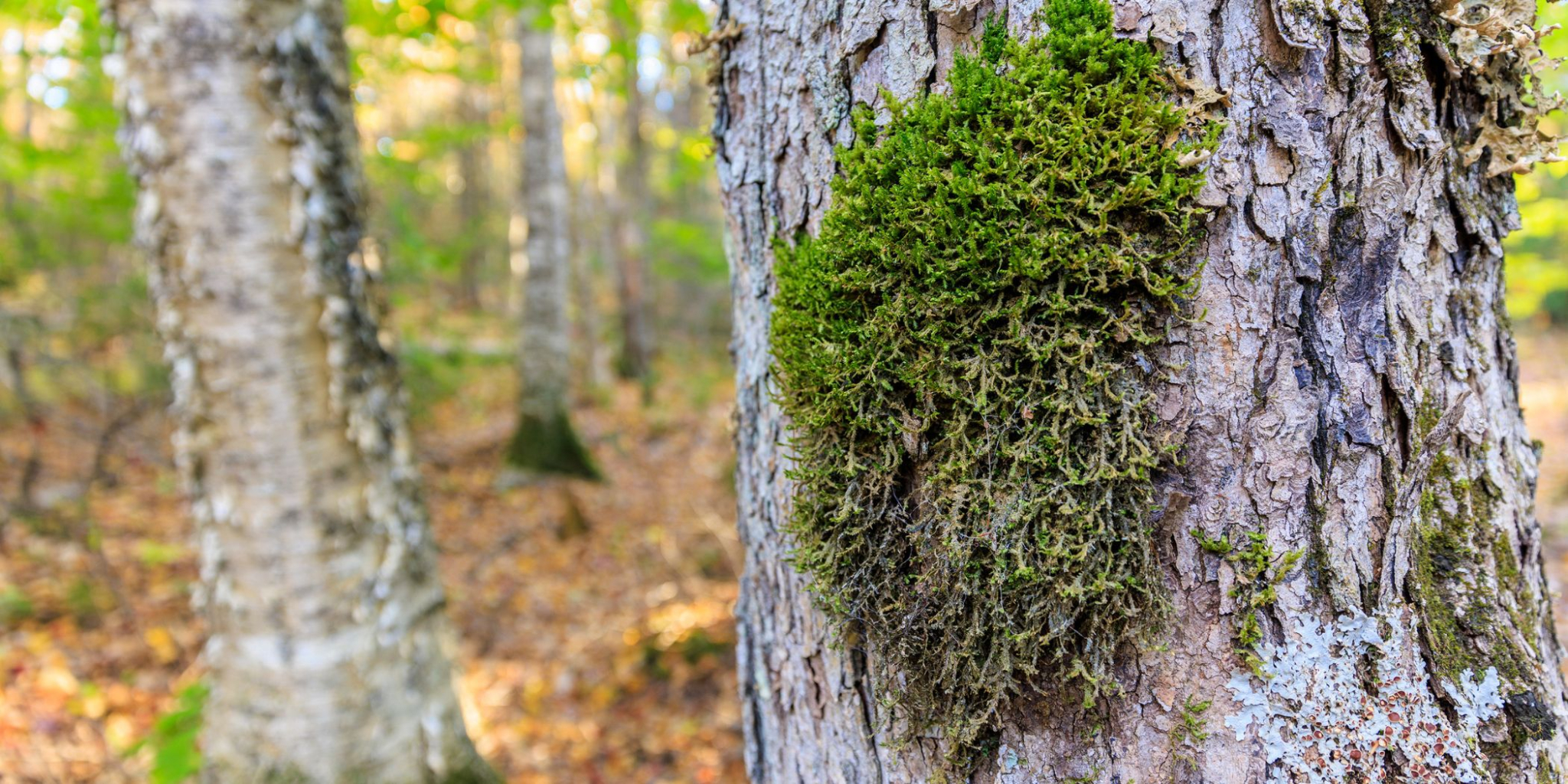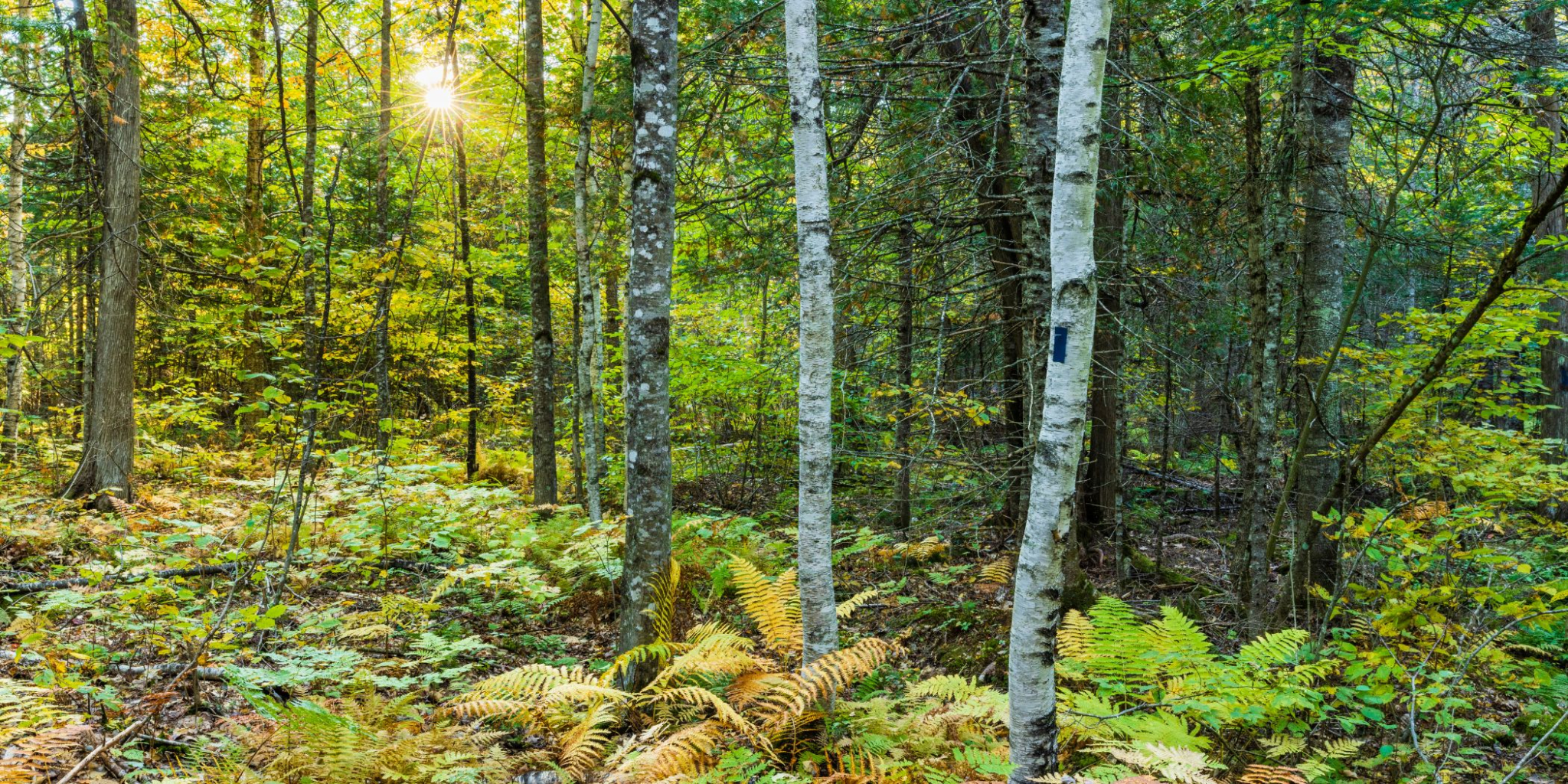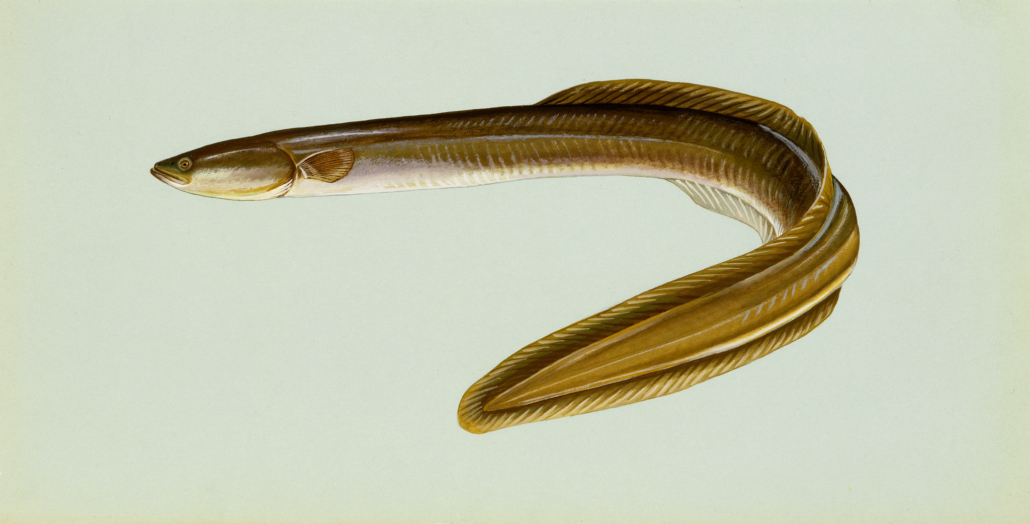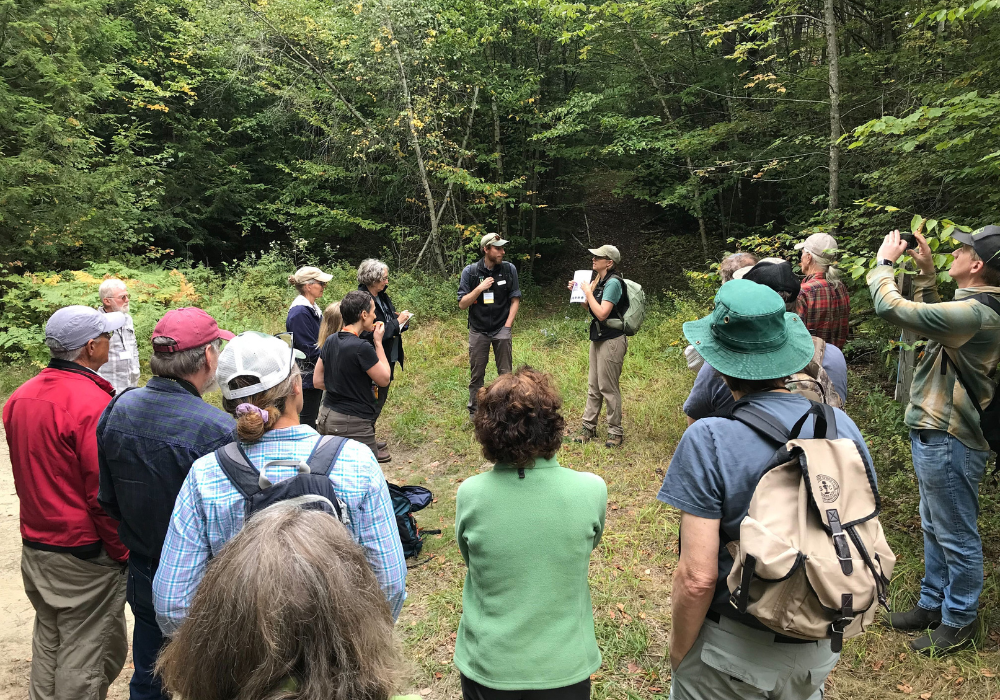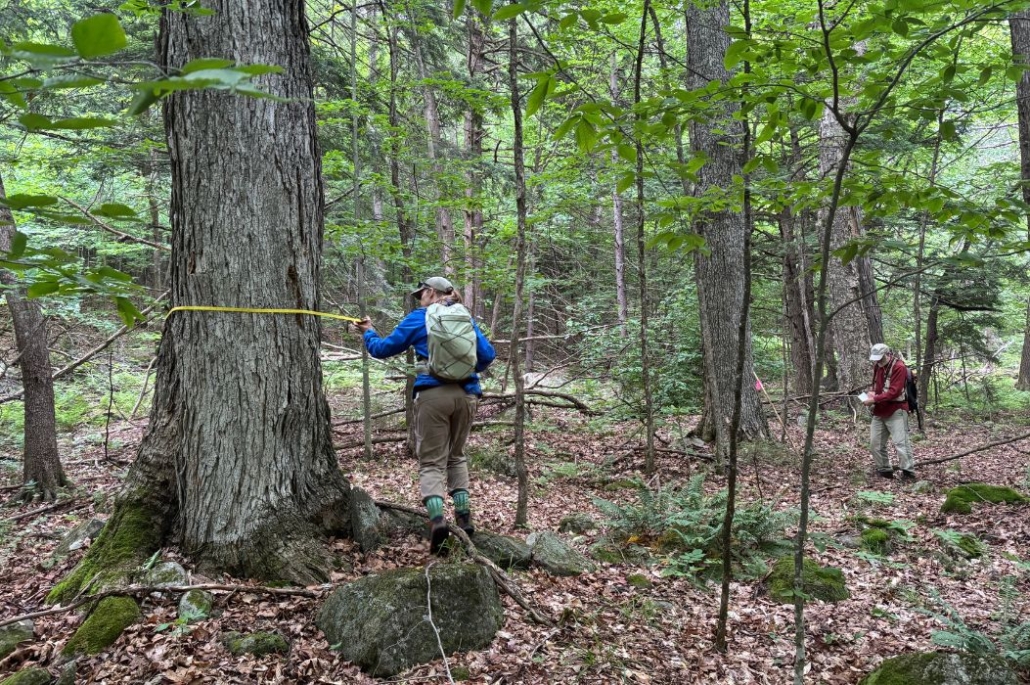Clark’s project is an example of the research possibilities offered by NEWT’s Preserves and Conservation Easements. While NEWT conducts its own ecological research via its Wildlands Ecology program, outside scientists and scholars may apply for research permissions on NEWT lands by reaching out to Shelby Perry, director of Wildlands Ecology.
Alder Stream is particularly enticing for tree researchers, or “dendrologists,” because the Preserve hosts what may be the largest grove of reproducing American Chestnuts left in the wild. Virtually all mature American Chestnuts succumbed in the twentieth century to chestnut blight, a non-native fungus that spread throughout North America and killed an estimated three to four billion chestnut trees. Today, one can easily find chestnut saplings sprouting from the stumps of toppled or logged trees in eastern forests, but the vast majority of these saplings are killed by the blight long before they reach the size and age necessary to produce seeds, or “mast.” The Alder Stream chestnuts, then, are something of a treasure for scientists studying this species that once flourished in our woods.
But Clark wasn’t solely interested in the chestnut grove. He was also visiting the Alder Stream research site to check on the seeds of other trees, including oak, beech, and pine. These species all provide important forage, like the chestnut once did, for wildlife as they prepare for the Northeast’s long winter.
Once Clough and Clark had met and were sufficiently coated in bug spray (the black flies may have taken the day off, but the mosquitoes did not), the two hiked to the chestnut grove. There, Clark gave Clough a quick “citizen-science mini training,” as she described it, in his research methodology. The project measures tree reproduction rates, or “fecundity,” in two ways: observations via binocular of the development in the treetops of the coming autumn’s mast, and last year’s mast as evaluated by the debris in 20 to 30 “seed traps” Clark’s lab assistant, Jordan Luongo, had built and placed around the research area.
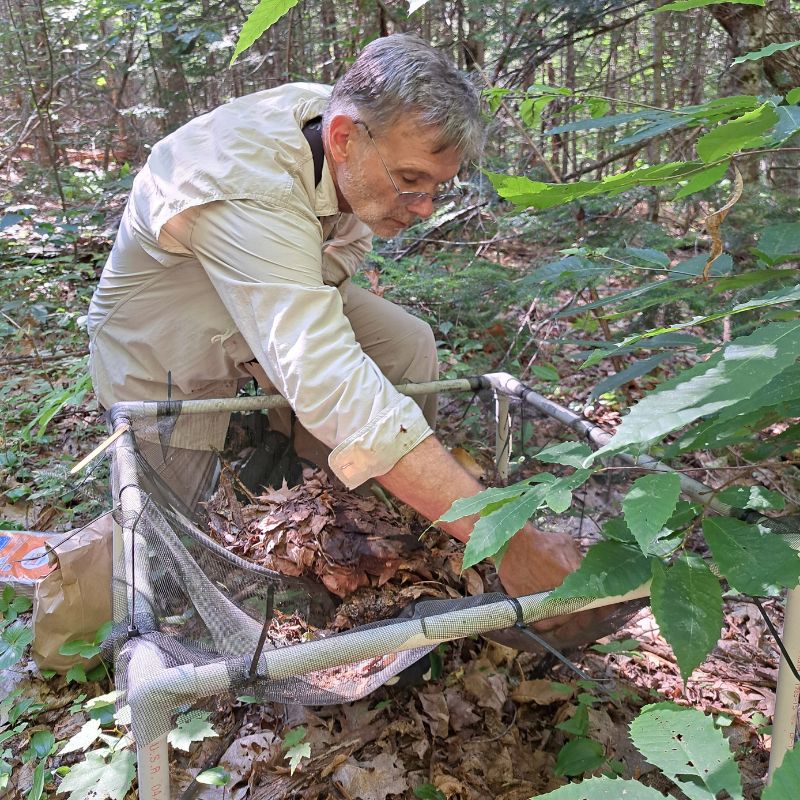
Clark surveys last year’s mast in one of 20 to 30 “seed traps” he and his lab assistant placed around Alder Stream Wilderness Preserve.


